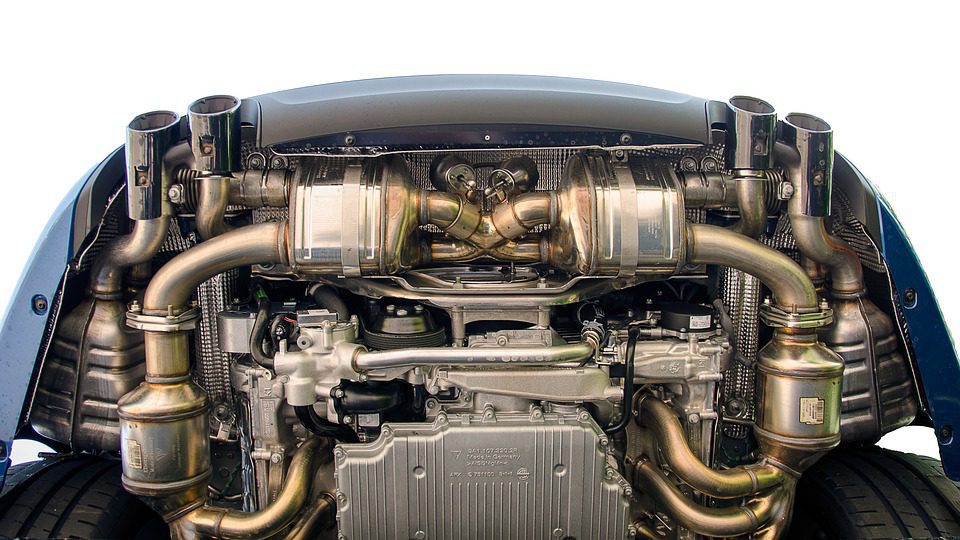Opel Corsa Engine: Top Tips for Upkeep and Care
Checking Out the Inner Workings of a Compact Vehicle's Engine System
As chauffeurs, we frequently consider granted the detailed procedures that occur within the confines of our car's engine system. The small yet complicated machinery that propels us onward is a wonder of engineering accuracy and coordination. From the regulated surges in the combustion chamber to the thorough timing of gas injection, every component plays an essential function in the smooth procedure of the engine. In this expedition of a compact lorry's engine system, we will unravel the internal operations of this mechanical symphony, clarifying the enigmas that drive us ahead on our day-to-day journeys.
Combustion Process Introduction
The burning procedure in a small vehicle's engine system is a critical system that effectively transforms fuel into energy to power the lorry. This procedure happens within the combustion chamber of the engine, where gas and air mix, stir up, and create regulated surges. The combustion procedure contains 4 primary phases: consumption, compression, exhaust, and power.
Throughout the intake stage, the piston relocates downward, attracting in a combination of air and fuel right into the burning chamber. This downward motion produces the power required to drive the automobile. This cyclic combustion procedure is fundamental to the operation of a portable lorry's engine system, ensuring effective power conversion for propulsion.
Piston and Cyndrical Tube Communication

The piston's accurate fit within the cyndrical tube is crucial for preserving optimal compression and stopping energy loss during combustion. Limited clearances between the piston and cyndrical tube walls make sure effective securing, allowing the piston to relocate smoothly without enabling gases to leakage past. Correct lubrication is additionally essential to minimize friction and use between these elements, enhancing long life and performance.
Moreover, the design and products utilized in making the piston and cylinder impact engine effectiveness and durability. Modern engines typically use light-weight yet durable products like aluminum alloys for pistons and cylinder linings to lower inertia and improve thermal efficiency. On the whole, the unified interaction between the piston and cyndrical tube is fundamental to the engine's functionality and overall efficiency.
Fuel Shot System Performance
Fuel shot systems in portable automobile engines play a critical role in precisely delivering gas to the burning chamber for effective and controlled ignition. The fuel injection system functions by infusing fuel into the combustion chamber at the ideal minute throughout the engine's operation (opel corsa engine). This accurate timing makes sure that the fuel blends evenly with the air for correct combustion, bring about boosted fuel performance and lowered discharges
There are primarily 2 types of fuel injection systems utilized in small lorry engines: port fuel shot (PFI) and straight fuel shot (DFI) PFI systems inject fuel right into the consumption port prior to the consumption valve, while DFI systems inject gas directly right into the combustion chamber. Both systems have their advantages, with DFI using far better fuel atomization and PFI offering an extra economical option.
Comprehending Engine Cooling Systems
Effective procedure of a small automobile's engine depends greatly on the performance of its cooling mechanisms. Engine air conditioning is necessary to stop overheating, which can result in serious damage and lowered efficiency. The air their explanation conditioning system in a compact vehicle typically is composed of a number of elements collaborating to manage the engine temperature level. One essential component is the radiator, which utilizes coolant to take in warm from the engine. As the hot coolant flows with the radiator, it releases warm into the air, cooling off before returning to the engine. The water pump distributes the coolant with the engine and radiator, making certain a constant circulation to regulate temperature. Additionally, the thermostat assists manage the coolant circulation to keep optimum engine temperature level. Some cars also have cooling down fans that trigger when additional cooling is needed, such as during rush hour or warm climate. Recognizing these engine air conditioning devices is important for maintaining the efficiency and longevity of a small vehicle's engine system.

Exhaust System Elements Explained
The ideal performance of a small car's engine cooling mechanisms depends on a corresponding system recognized as the exhaust system, which makes up various vital elements for making certain efficient discharges and engine performance. The exhaust manifold gathers exhaust gases from the engine's cyndrical tubes and routes them to the catalytic converter.
One critical element of the exhaust system is the oxygen sensing unit, which monitors the oxygen degrees in the exhaust gases to aid control gas intake and guarantee optimum engine efficiency. opel corsa engine. Furthermore, the resonator may exist in some exhaust you could try this out systems to lower noise levels. Generally, the exhaust system plays an important role in maintaining engine performance, lowering dangerous discharges, and making sure a quieter driving experience for small lorry owners

Verdict
To conclude, the compact automobile's engine system is a complicated combination of elements that collaborate to facilitate the burning process, transform fuel right into power, and expel waste gases. Understanding the internal workings of the engine system, consisting of the piston and cyndrical tube communication, fuel shot system, engine cooling systems, and exhaust system parts, is vital for maintaining ideal efficiency and performance of the lorry.
The combustion procedure in a small car's engine system is an important system that efficiently converts gas right into power to power the lorry.Fuel shot systems in portable vehicle engines play an important function in exactly delivering gas to the burning chamber for regulated and effective ignition.There are mainly 2 types of fuel injection systems used in small car engines: port gas shot (PFI) and direct gas injection (DFI) Comprehending these webpage engine cooling mechanisms is vital for keeping the performance and durability of a compact car's engine system.
The optimal performance of a portable car's engine cooling systems depends on a corresponding system understood as the exhaust system, which makes up different vital parts for making sure efficient discharges and engine efficiency.